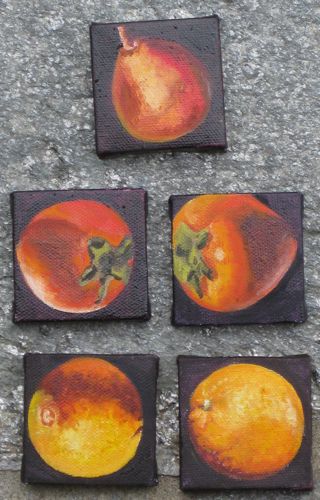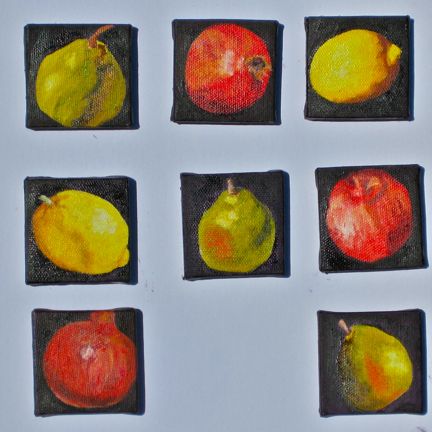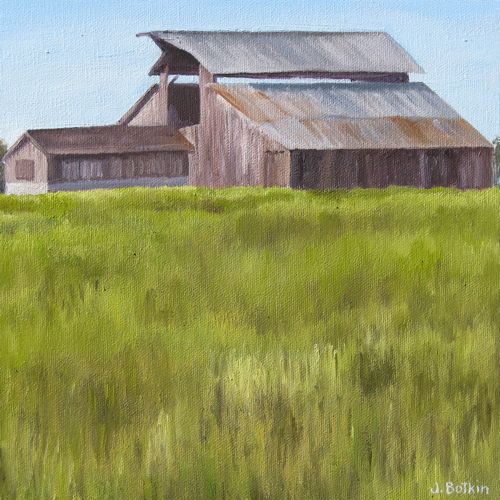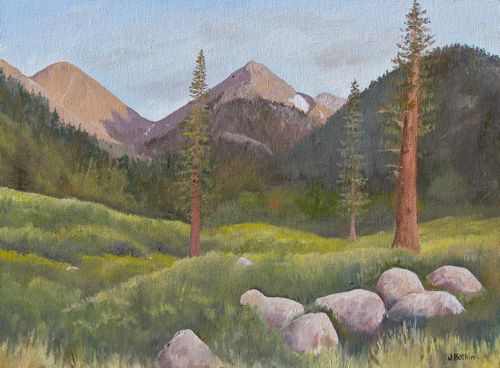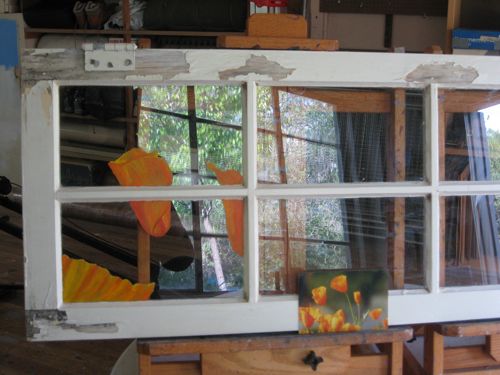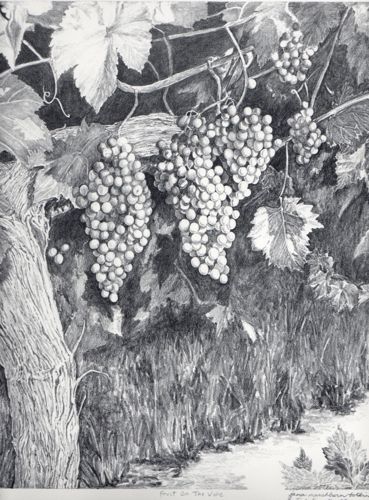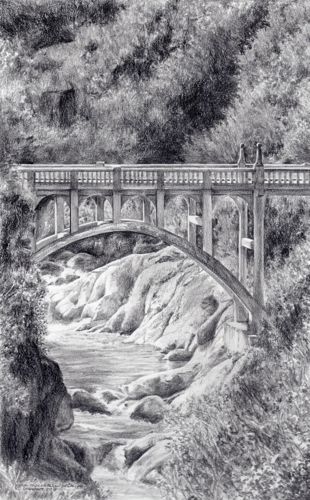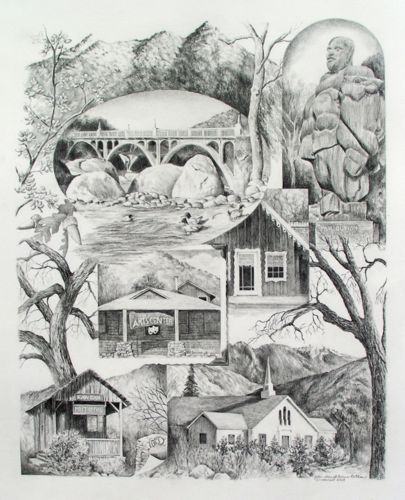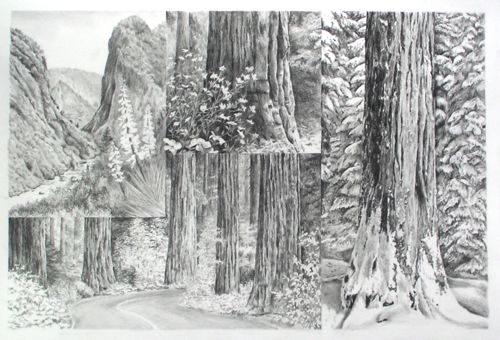Here are the rest of the 2×2″ paintings. My customer has selected 5 and will return all the unchosen ones to me tomorrow. I will deliver them to Colors, where Wendy will display and sell them on little easels for $16.50 each. The ones that my customer did not choose will not be inferior – don’t be put off by their apparent rejection. Taste is an individual matter, or de gustibus non es disputandum, as my wise (and wise-ass) Dad used to say.
Images of Home
The show continues at the Tulare Historical Museum. The address is 444 W. Tulare Street and the phone # is 559-686-2074. I’d advise calling for their days and hours because their website is looking a bit wacky at the time of this posting. Although it is a museum with an entry fee, you DO NOT have to pay if you are visiting the attached gallery. It is a little confusing, but humbly speaking of course, my work has NEVER LOOKED BETTER than it does hanging on their walls under their lights! The show is up until July 16. Now, have a look at 2 more pieces:
Kaweah Post Office IV, sold
Spring Sycamores, 11×14″, oil on wrapped canvas, $175
The Kaweah Post Office is a much loved little building 3 miles up North Fork Drive in Three Rivers. You can read more about it here. And, in case you were wondering, sycamores are native trees in Tulare County. They like to grow in drainages and to live near water.
Guest Post
Today’s post is taking place at Chris LoCurto’s blog. Because his blog is about business, I wrote about business. This is the first line of the post:
“As an artist, I am particularly aware of the fact that luxury items are not in great demand these days.”
Read the rest of it on Chris’s blog, comment there if you’d like! He will respond – great guy, a privilege to get to work with him even briefly. In fact, when I read his blog, I think that if I had ever had a job at a company like he writes about, I probably wouldn’t have become a self-employed artist!
This picture shows how I feel when I get invited to do a guest post – warm and fuzzy!
Cute Li’l’ Things
A while back, I thought I was ordering a dozen of these little bitty 2×2″ canvases. Turns out I ordered a dozen packages of 5 each. Ummm, oops. They are fun and fairly easy to paint, a good way to try a single subject. A friend/customer requested several fruits of this size. So that she’d have choices, I did multiple versions of each fruit. She requested a few oranges too, so those are in the works along with a few persimmons. They appear below in a poor quality photo – just to prove I am working on them and not just sitting at the computer!
Images of Home, Continued
Here is a continuing peek at the new paintings in the Tulare Historical Museum. Of course they look better in “real”, but for Cousin Maggie and other long distance friends, this is the fulfillment of my promise to show the paintings.
Tulare County Barn, 10×10″, oil on wrapped canvas, $125
When I was a kid, I assumed this was the shape of all barns. At age 16, I visited Oregon, Idaho and Washington, and was AMAZED to see the different architectural styles of barns. Didn’t take much to impress an Ivanhoe orange grower’s daughter, who grew up to be a California artist in Tulare County. (Hey Mr. Google, are you paying attention?)
North Fork Drive, 10×8″, oil on wrapped canvas, $90
Regardless of the time of year, this is such a scenic little part of this Three Rivers road. The people who own this building probably refer to it as their “barn”!
Images of Home
Odd Jobs
My friend Nadi has just finished painting a window. You can see her fabulous work here: Blue Window 4
I have just begun painting one. Literally, not figuratively. (The subject is California poppies, because, as you know, I am a California artist.) I started it on the wrong side, because messing up is often my modus operandi, a little Latin lingo for you. I will scrape it off with a razor, flip the window around, and begin again. Practice, practice, practice. Of course I have warned my customer not to scratch her window because if she does, the paint will go away!
NEWS FLASH! – The customer and I looked at the window in the place where it is to be hung. It looks better with the paint on the back side of the glass than on the front, so no razor-blade scraping will be necessary! Isn’t that great!! Sure surprised me. . .
Links to Learning To Draw
In case you are a new reader of this blog and are wondering how to find the earlier chapters of Learning to Draw, here is a convenient clickable list of the first eight.
If you want to click on all these but get tired of going back to this page, just right-click on each one and open in a new tab. Then you can go through them sequentially without wearing out your Back button. How did a California artist become so computer savvy? By asking people and trying stuff!
- Chapter One
- Chapter Two
- Chapter Three
- Chapter Four
- Chapter Five
- Chapter Six
- Chapter Seven
- Chapter Eight
Ever say a word so often that it ceases to make sense? I just destroyed the word “chapter” for myself!
$4 Lawn Job, Part 4
Our lawn mowing boy spent a fair amount of time thinking about what Mr. Persnickety told him. “No one has ever done a $4 lawn job for me.” He decided that he would be the first. I’ve forgotten much of what the boy did, but it did involve some sort of a roller device to flatten any slight bumps and there was a nap in the middle of the day so he could continue on in the afternoon. When he had finally exhausted every possible method of perfecting that lawn, he knocked on the door and announced to Mr. Persnickety that he had done a $4 lawn job. Mr. Persnickety was skeptical and began inspecting his work. After going over every inch of his yard, he agreed that the boy had indeed accomplished the impossible and he paid him his $4.
What does that have to do with my art? Hang on, I’m getting to that part! You may have noticed that I don’t participate in many competitions or shows that are juried and judged. Earlier in my career, I tried those. After several rejections, (one show was a consistent winner – Madera Arts Council Ag Arts) and after reading a great deal about ways to build an art career, it seemed best to just focus on the local market.
Then, along came the Richeson 75. This is the first show I’d heard of that separates dry media from oils from wet media, which means pencil isn’t competing against painting. Something told me to try this show, and I knew I was facing my own $4 lawn job challenge. (REALLY! That is how I thought of it!)
First, I chose my best subject and found the best possible photo of it. Then, I cropped it to the Golden Rectangle proportions, drew it carefully, shaded it, took it to my students to evaluate, layered a bit more, lightened here and darkened there, put it under a magnifier and sharpened all the edges of the bridge, studied it, changed a few things, and finally, sent it to the Richeson 75 in the Landscape, dry media category.
Rappity, tappity, bingety, BANG, BOOM!!! chhhhhhhh (that last noise was a cymbal.)
Rural Dignity, pencil, 6×9-1/2″
It will be in the exhibition book for the Landscape, Architecture and Seascape 2011 show!!
$4 Lawn Job, part 3
Our lawn-mowing boy in the story was satisfied with the $2 job for awhile, and then decided to see if he could do the mowing job for $3. This time he mowed carefully in one direction, then mowed carefully in the other. He probably trimmed the edges and dug out some weeds. It took a bit of fancy talking, but he convinced Mr. Persnickety that the job was indeed worth $3.
When I read the story, I couldn’t figure out how he could possibly improve on that massive effort at perfection. I thought he ought to be satisfied that he was able to do a $3 lawn job; after all, Mr. Persnickety had warned him in advance that no one had ever done a $4 job in the history of hiring neighborhood boys to mow.
This is just how I felt when I began drawing collages. It took a long time to plan, a long time to lay out, and a very long time to shade. Didn’t seem as if there was any place to improve after that!
